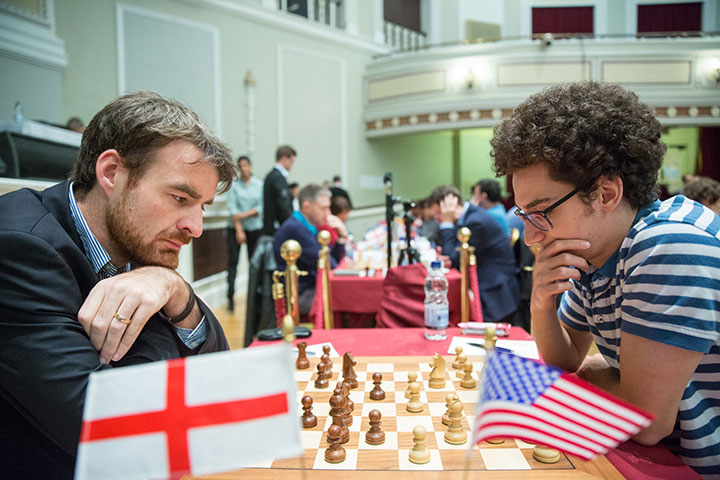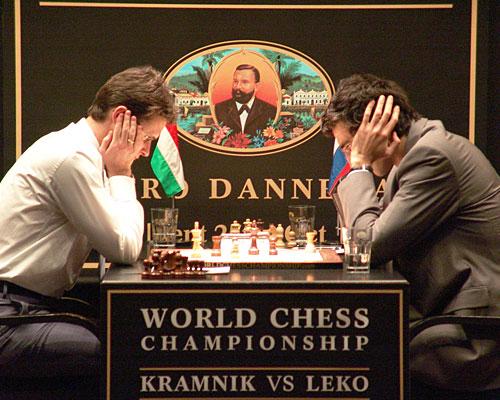


This week, I thought we'd go on a slight tangent, with the Agony that can be unleashed when collaboration with chess engines goes wrong. These have, of course, become immensely strong nowadays especially in tactical positions. But they nevertheless still require sufficient time to do their thing and this can lead to horrible accidents.
 The most famous instance of all occurred in the Classical World Championship match between Vladimir Kramnik and Peter Leko in Brissago In Switzerland in October 2004. World Championship matches (as I know from personal experience after being a second at two of them) generate an unbelievable volume of analytical work and it's crucial both to identify the battleground and to get it right.
The most famous instance of all occurred in the Classical World Championship match between Vladimir Kramnik and Peter Leko in Brissago In Switzerland in October 2004. World Championship matches (as I know from personal experience after being a second at two of them) generate an unbelievable volume of analytical work and it's crucial both to identify the battleground and to get it right.
The first requirement may seem obvious but it's all too easy to take a sequence for granted and that's what happened in the Kasparov vs. Anand match in New York 1995 when Anand played the Open Ruy Lopez for the second time and we started analysing a move too late...
In Brissago, Kramnik's camp identified the opening line perfectly but no doubt snowed under by variations, managed to get an assessment wrong by a full 180%!
If you're going to play a critical opening, then you have to be as confident as possible in your analysis. Quite often, top players simply forget the details of their analysis if they are slightly surprised by their opponent's choice. But in the recent Isle of Man Open Gawain Jones willingly played a recommendation from a DVD by Peter Svidler which his opponent Fabiano Caruana knew in advance to be unsound. In a welter of analysis, there is bound to be the odd error and this is absolutely no criticism of Svidler, but the outcome was disastrous for Jones.
I was prompted to write on this subject not by any of the above but a murderously complicated endgame at the recent European Club Cup. When I first looked at this, I believed my engine that Black was winning after the complications started. But later I gave the silicon monster(s) more time and it turns out that White can hold, albeit after a totally hair raising sequence.
This column depends for its life blood on contributions from readers. At the moment I'm fairly low on these and await a transfusion. And unless this request unleashes a great spurting of gore, you should find your games published pretty quickly.
Did you enjoy the column and instructive analysis by GM Jonathan Speelman? Do you wish you could have a world-renowned grandmaster analyzing your play? You can!
To submit your games just upload a PGN or ChessBase file, along with your name and e-mail address. Send one success story (Ecstasy) and one loss (Agony). Tell why you chose them, where or when they were played
If your game is selected Jon will contact you personally, and not only will you get free detailed commentary of your games by one of chess’s great authors and instructors, and former world no. 4 player, but you also win a free three-month ChessBase Premium Account!
A three-month Premium subscription to ChessBase Account means you get:
Correction October 31: In the Kasparov vs. Anand game, Jon initially wrote that Mikhail Tal had suggested the move 14.Bc2 "in the interim". The text has been updated to reflect the fact that Tal was no longer living in 1995.